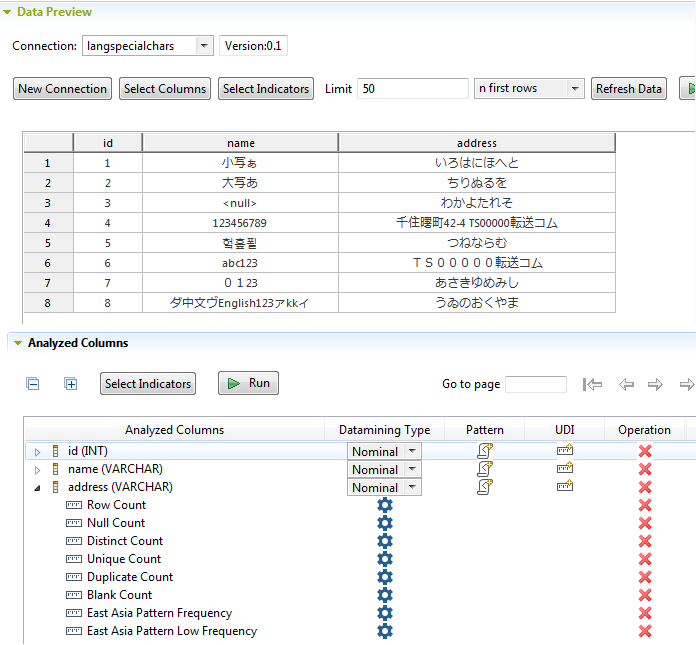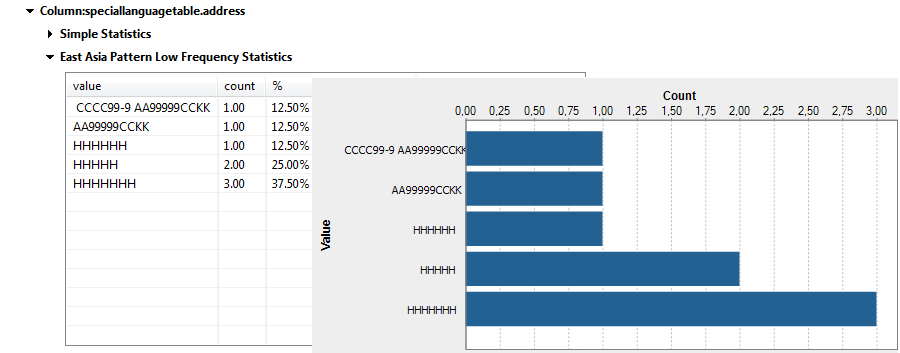East Asia pattern frequency indicators
| Indicator | Purpose |
|---|---|
| East Asia Pattern Frequency | Computes the number of most frequent records for each distinct pattern. |
| East Asia Pattern Low Frequency | Computes the number of less frequent records for each distinct pattern. |
The above two indicators work only with Latin characters and are available only with the Java engine. They are useful when you want to identify patterns in Asian data.
The above two indicators give patterns by converting Asian characters to letters such as H,K,C and G following the rules described in the following table:
| Character type | Usage |
|---|---|
| Latin numbers | 9 replaces all ASCII digits |
| Latin lowercase letters | a replaces all ASCII Latin characters |
| Latin uppercase letters | A replaces all uppercase Latin characters |
| Full-width Latin numbers | 9 replaces all ASCII digits |
| Full-width Latin lowercase letters | a replaces all ASCII Latin characters |
| Full-width Latin uppercase letters | A replaces all uppercase Latin characters |
| Hiragana | H replaces all Hiragana characters |
| Half-width Katakana | k replaces all half-width Katakana characters |
| Full-width Katakana | K replaces all full-width Katakana characters |
| Katakana | K replaces all Katakana characters |
| Kanji | C replaces Chinese characters |
| Hangul | G replaces Hangul characters |
For more information about the supported Asian character types and the related Unicode ranges in column analyses, see the documentation.
Below is an example of a column analysis using the East Asia Pattern Frequency and East Asia Pattern Low Frequency indicators on an address column.

The analysis results of the East Asia Pattern Low Frequency indicator will look like the following:

These results give the number of the least frequent records for each distinct pattern. Some patterns have characters and numbers, while others have only characters. Patterns also have different lengths, so this shows that the address is not consistent and you may need to correct and clean it.
The following table shows the indicators that you can select in any database:
| Data type | Number | Text | Date | Others | ||||
|---|---|---|---|---|---|---|---|---|
| Analysis engine type | Java | SQL | Java | SQL | Java | SQL | Java | SQL |
| East Asia Pattern Frequency |

|

|

|

|

|

|

|

|
| East Asia Pattern Low Frequency |

|

|

|

|

|

|

|

|
Did this page help you?
If you find any issues with this page or its content – a typo, a missing step, or a technical error – let us know how we can improve!
